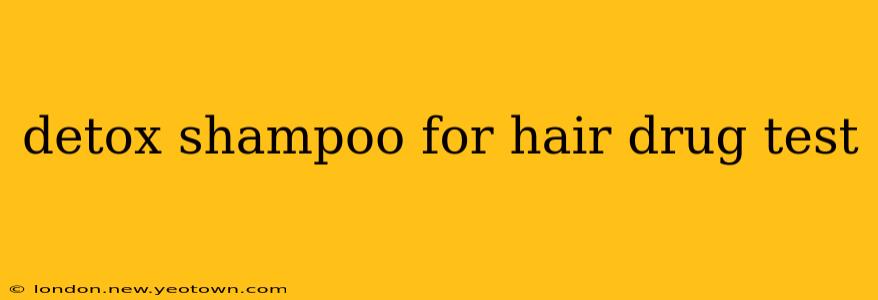Detox Shampoo for Hair Drug Tests: Separating Fact from Fiction
The anxieties surrounding a hair follicle drug test are real. Imagine the pressure, the fear of a positive result jeopardizing a job opportunity, a custody battle, or even your freedom. Desperate times often lead to desperate measures, and the internet is flooded with promises of miracle detox shampoos that can magically cleanse your hair of drug metabolites. But does this magic truly exist? Let's dive into the world of detox shampoos and separate fact from fiction.
This isn't a story about a quick fix. It's about understanding the science behind hair follicle drug testing, the limitations of detox shampoos, and making informed decisions.
What is a Hair Follicle Drug Test?
Hair follicle drug tests are different from urine or saliva tests. They detect drug use over a longer period—typically 90 days, sometimes even longer. The test analyzes the hair shaft for traces of drug metabolites that have been incorporated during the hair growth process. These metabolites are remarkably persistent, making them challenging to remove completely.
Do Detox Shampoos Really Work?
The short answer is: not effectively enough to guarantee a negative result. While some detox shampoos might temporarily mask some surface-level traces of drugs, they are unlikely to remove the metabolites embedded deep within the hair shaft. Think of it like this: you can wash the dirt off the surface of a shirt, but you can't easily remove a stain that's seeped into the fibers. The drug metabolites are essentially "stains" in your hair.
Many products marketed as detox shampoos make bold claims, but scientific evidence supporting their effectiveness is largely lacking. They often rely on ingredients like clarifying agents that remove dirt and oils, but these don't target drug metabolites. Over-reliance on these products could even cause damage to your hair.
What are the Ingredients in Detox Shampoos?
Most detox shampoos contain ingredients like:
- Clarifying agents: These strip away oils, dirt, and some surface-level contaminants, but not drug metabolites.
- Chelating agents: These help bind to certain minerals, but their efficacy in removing drug metabolites is questionable.
- Herbal extracts: Often marketed with dubious claims of detoxification properties, these lack solid scientific backing.
These ingredients might leave your hair feeling clean, but they won't eliminate the evidence of drug use detectable by a hair follicle test.
What are the Alternatives to Detox Shampoos?
Instead of focusing on potentially ineffective detox shampoos, consider these approaches:
- Abstinence: The most reliable way to pass a hair follicle test is to abstain from drug use for the required period before testing.
- Professional Consultation: If you're facing a drug test, talking to a legal professional or a substance abuse counselor is crucial. They can guide you on the best course of action.
Can you shorten the detectable window of drug use?
No known method can reliably shorten the detection window of drug use in hair follicle tests. The process of drug metabolites becoming incorporated into the hair shaft is complex and not easily reversed.
What is the best way to prepare for a hair follicle drug test?
The most reliable way is to abstain from drug use for an extended period before the test, allowing for sufficient new hair growth that is free of drug metabolites.
In conclusion, while detox shampoos might offer a temporary sense of security, relying on them to guarantee a negative result in a hair follicle drug test is highly risky. Focus on abstinence and seeking professional advice – these are far more effective and reliable strategies. Remember, honesty and proactive planning are your best defense. This story emphasizes the importance of responsible choices and the limitations of quick fixes.

